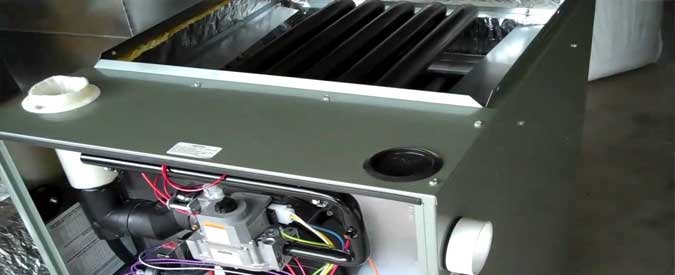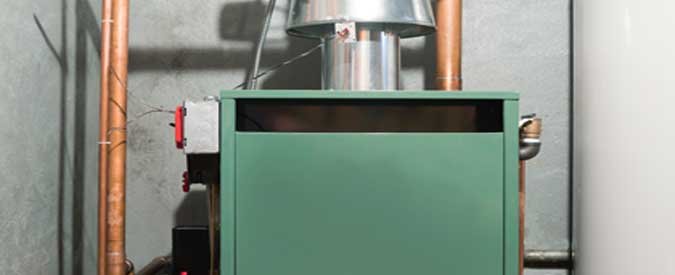Last Updated: February 14, 2023
Two-Stage vs Single-Stage Furnace Costs
Try Our Free Furnace Cost Calculator
Fill out our 30 second free form to receive competitive pricing from pre-screened HVAC companies. No commitments. Our service is always free!
Summary: What is a Two-Stage Furnace?
Two-stage furnaces are a little smarter and more complex than their single-stage counterparts. Instead of just a basic on/off switch, two-stage furnaces have two “on” settings: high-fire and low-fire. The high-fire setting kicks on when a lot of heat is needed and low-fire kicks on when less is needed. Many two-stage furnaces also have multi-speed or variable speed blowers that distribute varying levels of air through the ducts. All in all, they’re better than single-stage furnaces at keeping a consistent air temperature.
How Much Does a Two-Stage Furnace Cost?
Mid-efficiency, two-stage furnaces costs about $2,500 to $4,000, including installation. The furnace itself usually costs $1,500 to $2,000, while labor adds an additional $1,000 to $2,000. High-efficiency models cost about $4,000 to $5,000 to buy and install.
Generally, two-stage furnaces cost about $500 more than comparable single-stage models. Opting for a variable-speed blower adds about another $200. For example, a brand that sells a high-efficiency, single-stage furnace for $3,700 would likely sell a high-efficiency, double-stage furnace for $4,200 and a high-efficiency, double-stage furnace with variable speeds for $4,400.
Two-Stage Furnace Pros
- Improved comfort - There are fewer temperature fluctuations with two-stage furnaces. The temperature stays fairly consistent so you’re not too hot and not too cold.
- Better efficiency - Because the temperature is more consistent, two-stage furnaces are more energy efficient. They use less fuel because they’re not pumping out unnecessary heat or constantly cycling off and on to maintain a comfortable temperature.
- Quieter - Two-stage furnaces run much quieter than single-stage furnaces.
Two-Stage Furnace Cons
- More expensive - Two-stage furnaces cost significantly more than single-stage furnaces because the technology is more advanced.
- Not ideal for large homes - Two-stage furnaces can be problematic in large homes, unless the home has zone heating. The first stage of heat might not have adequate blower speed to push air to the entire home.
Try Our Free Furnace Cost Calculator
Fill out our 30 second free form to receive competitive pricing from pre-screened HVAC companies. No commitments. Our service is always free!

Summary: What is a Single-Stage Furnace?
Chances are, you’ve had a single-stage furnace in your home at some point. The technology is older and simpler than two-stage furnaces.One-stage furnaces have a simple on/off switches that controls the heat. They’re either blasting heat at full force or not running at all. The furnace waits for the house to get cold (sometimes too cold) before kicking on. Then it pumps the house full of heat (sometimes too much heat) before the thermostat tells it to shut down.
How Much Does a Single-Stage Furnace Cost?
Mid-efficiency, single-stage furnaces costs about $2,000 to $3,500, including installation. The furnace itself usually costs $1,000 to $1,500, while labor adds an additional $1,000 to $2,000. High-efficiency models can cost $4,000 or more to buy and install.
Single-Stage Furnace Pros
- Less expensive - Single-stage furnaces cost about $500 less than comparable two-stage models, so they make sense on a tight budget.
Single-Stage Furnace Cons
- Not as efficient - Single-stage furnaces waste more energy than two-stage furnaces. They burn more fuel, increasing your energy costs.
- Not as comfortable - Single-stage furnaces struggle to keep a consistent temperature. If you set the thermostat at 72 degrees, the actual temperate might fluctuate between 68 and 76, leaving you too hot or too cold.

Choosing a Furnace
Single-stage or double stage is far from the only decision you’ll have to make when purchasing a furnace. You’ll have to decide on fuel type - natural gas, propane, oil or electric - as well as size (heat output) and the energy efficiency rating.
Fuel type is often determined by the type of furnace you have now. If you have an electric furnace and there is no gas line running to your home, chances are it won’t be cost effective to switch. However, natural gas is typically less expensive than oil, and both tend to be less expensive than electricity.
Energy efficiency is measured by annual fuel utilization efficiency (AFUE). If a furnace has an AFUE of 80, that means 80 percent of the fuel is converted to heat while the other 20 percent is lost. For gas- and oil-fueled furnaces, the lowest efficiency rating allowed by federal rules is 78 percent (except in mobile homes, where the minimum is 75 percent). High efficiency units have an AFUE of 85 percent or greater. Electric furnaces are always highly efficient; it’s just that electricity is a more expensive heating method than gas or oil.
Heat output is measured in British thermal units (BTUs). Common heat outputs include 40,000, 60,000, 80,000, 100,000 and 120,000 BTUs. The appropriate heat output is directly related to the size of your home - there’s only one number that works for each home. A furnace that is too large will not be energy efficient; one that is too small won’t provide enough heat. Consult a professional to find out which heat output is appropriate for your home.
Find the Best HVAC Pros Who Will Compete for Your Business
Try Our Free Furnace Cost Calculator
Fill out our 30 second free form to receive competitive pricing from pre-screened HVAC companies. No commitments. Our service is always free!
Try Our Free Furnace Cost Calculator
Fill out our 30 second free form to receive competitive pricing from pre-screened HVAC companies. No commitments. Our service is always free!